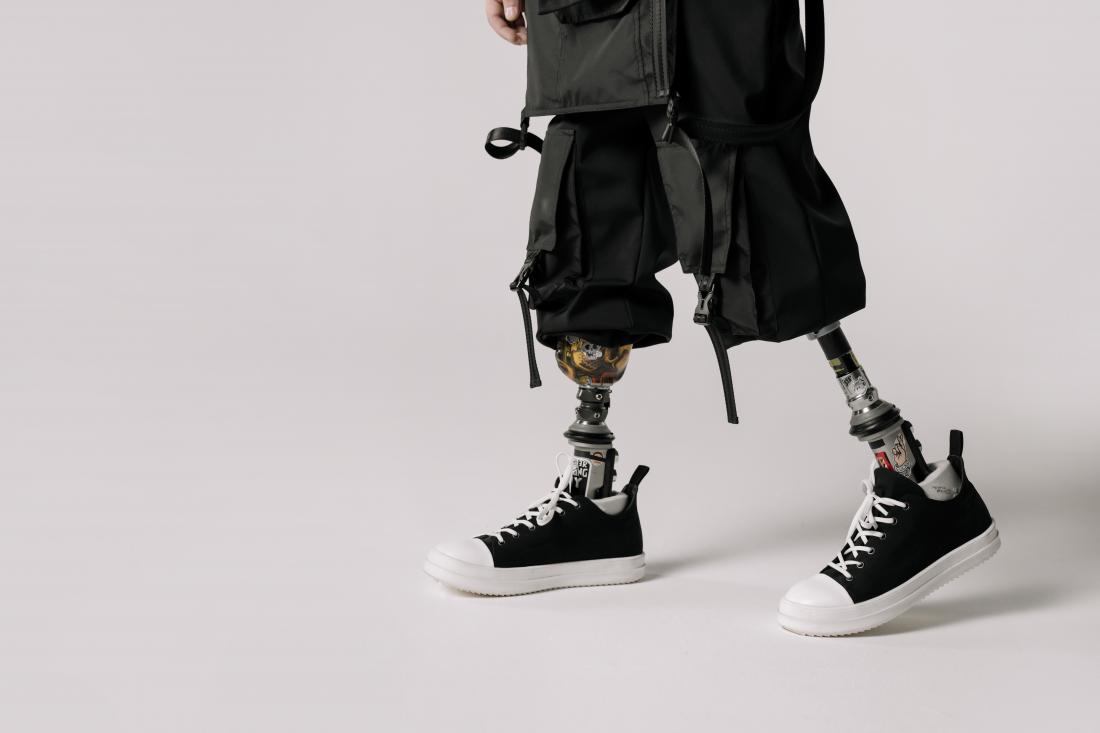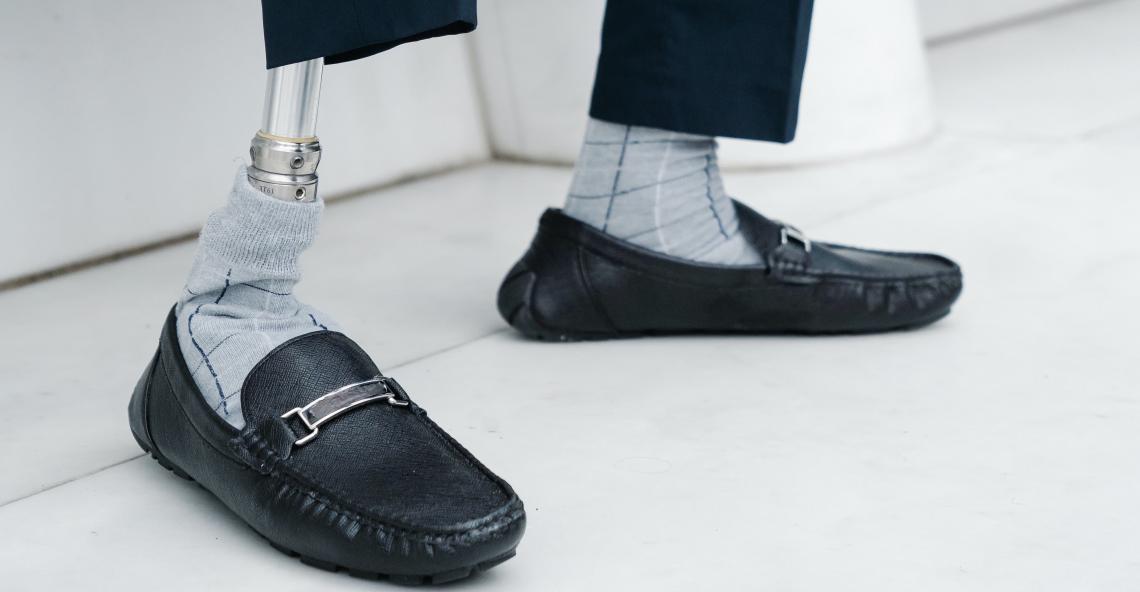Prostheses
In this project, the primary goal was to explore the feasibility of creating a cost-effective lower limb prosthetic socket (LLPS) using natural fiber-reinforced composites, underpinned by Sustainable Design Theory. The collaboration between Newcastle University and Universiti Malaysia Perlis (UniMAP) had a dual focus: firstly, to bolster UniMAP's capacity and secondly, to champion sustainability in LLPS development. The project encompassed three key objectives:
The first objective is related to Design Parameters and Green Engineering: At UniMAP, the team undertook the challenge of crafting a LLPS that incorporated natural fiber-reinforced composites, adhering closely to green engineering principles. The choice of material, Pineapple Leaf Fiber (PALF), was driven by its sustainability advantages. This endeavor also involved meticulous testing to ensure that the LLPS met rigorous mechanical and environmental standards.
The second objective is related to Environmental Impact Assessment: Newcastle University conducted a comprehensive life cycle analysis (LCA) study to gauge the environmental implications of our sustainable LLPS. Dr. KL Goh, a specialist in sustainability and LCA, played a pivotal role in this phase. The UniMAP team facilitated knowledge exchange through seminars and workshops on LCA (delivered by Dr Kheng Lim Goh), and a workshop Medical Device Regulations (delivered by Prof Tom Joyce) ultimately culminating in a collaborative working paper led by Dr. Goh.
The third objective is related to Stakeholder Engagement: The overall engagement strategy encompassed a broad spectrum of stakeholders, including hospitals, non-governmental organizations (NGOs), and industry partners. The project aim was to create a LLPS that aligned seamlessly with medical device regulations while fulfilling sustainability objectives. Close collaborations with entities such as Hospital Universiti Sains Malaysia (HUSM), Hospital Tuanku Fauziah (HTF), and the Malaysian Pineapple Industry Board (MPIB) were instrumental in this process.
Additionally, the team forged partnerships with organizations like Perniagaan Benang Serat M&Z, Universiti Teknologi Malaysia (UTM), and Universiti Teknikal Melaka (UTeM) to strategically select PALF as the ideal material for LLPS fabrication. This decision not only offered a sustainable solution but also aligned with our commitment to reducing waste and environmental pollution, a stark contrast to petroleum-based LLPS materials commonly available in the market.
The project's broader impact was felt across several dimensions, from advancing sustainability principles and capacity-building at UniMAP to actively involving stakeholders, thus ushering in a new era of LLPS development characterized by collaboration, sustainability, and adherence to stringent quality standards.
The team would like to thank the following organisation for their cooperation during the project:
Hospital Universiti Sains Malaysia (HUSM), Malaysia (Dr Al Hafiz Ibrahim)
Hospital Tuanku Fauziah (HTF), Malaysia
Department of Social Welfare Malaysia
Malaysian Pineapple Industry Board (MPIB), Malaysia
Mahidol University (Assoc Prof Taweechai Amornsakchai)
Singapore General Hospital, Singapore (Dr Andy Yew)
Perniagaan Benang Serat M&Z, Malaysia (Ms Muna Abd. Kadir)
ArtaLive Sdn Bhd, Malaysia
Universiti Teknologi Malaysia (UTM), Malaysia (Dr Muhammad Hanif Ramlee, Prof Mohammed Rafiq Bin Dato' Abdul Kadir)
Universiti Teknikal Melaka (UTeM), Malaysia
What is the immediate impact of this project? Currently, the initial 2022 press release on Asia Research News has inspired individuals worldwide to explore a similar approach, guided by the principles of Sustainable Design Theory, for developing affordable prosthetic sockets. The team is delighted to have received inquiries, including one from undergraduate students at Nanyang Technological University in Singapore. They sought guidance on technical issues related to their project, which involves creating prostheses from sustainable materials, particularly recycled plastics. They inquired about adhering to Singapore's medical device regulations and the feasibility of recycling plastic materials by shredding them and using an extruder to create filaments for 3D printing prosthetics.
Additionally, the team received an inquiry from a group of 7th graders in the USA. They aimed to present their lower limb prosthetic prototype at a school science fair, with the goal of making it both affordable and cost-effective using readily available materials. They sought feedback on their model and its alignment with Sustainable Design Theory. Subsequently, the 7th graders' group achieved first place in their competition.
Finally, two vidoes have been produced for the project. They can be accessed at Figshare:
The Lower Limb Prosthetic Socket: a chronological account
The Lower Limb Prosthetic Socket: snapshots
For further enquiries, please contact Dr Kheng Lim Goh at [email protected]




